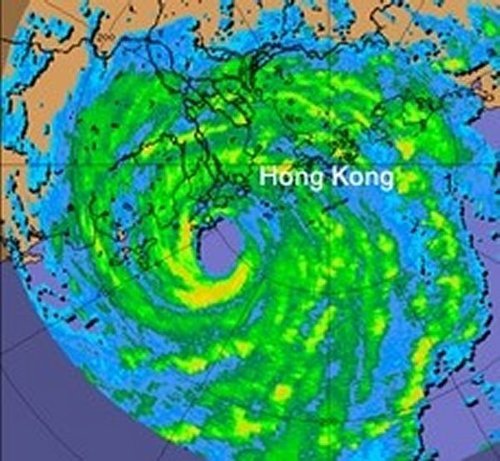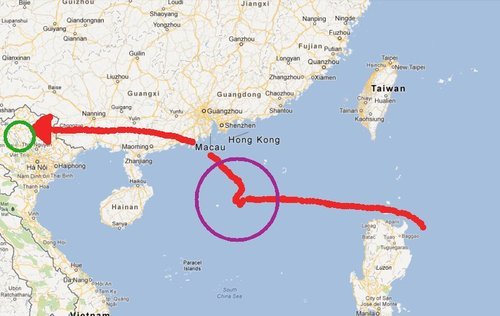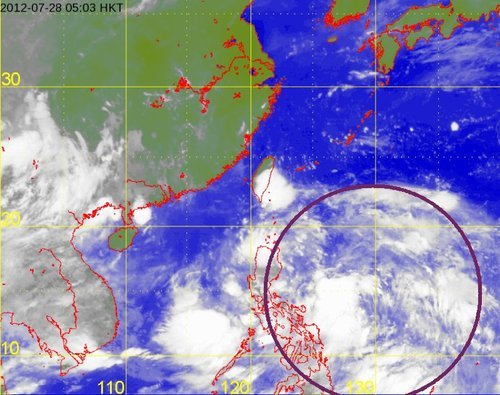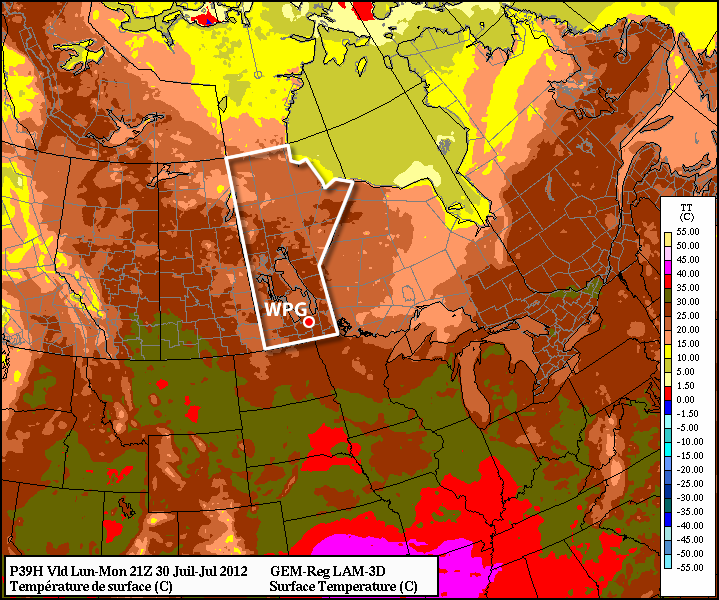Severe Typhoon Vicente Plows through Southern Asia
This past week, typhoon Vicente spun up in the Pacific Ocean and made landfall near Hong Kong on July 23rd. The severe typhoon, of category 2 hurricane strength, amassed winds of between 155km/h just before it made landfall about 100 kilometres to the south-west of Hong Kong’s city core. Although the typhoon first touched land outside of Hong Kong, its hurricane-force winds did extend out into the city. In consequence, the Hong Kong Observatory (HKO) issued a level 10 advisory – the highest possible on the scale – advising residents to stay inside and closing non-essential services as well as schools. The level 10 advisory had only occurred 13 times since 1946, with this most recent advisory being the first in the 21st century (the last level 10 advisory was issued in 1999). Vicente had somewhat of an unusual track, being stationary 300 kilometres to the south of Hong Kong for 15 hours then strengthening significantly before moving inland the following day. The strengthening that occurred with Vicente, within this short amount of time (48h), had never been observed this close to land with prior significant typhoons that struck the region.

RADAR image of Vicente as he made landfall on the afternoon of July 23rd. (Source: HKO)
Although Vicente forced the HKO to issue a level 10 advisory, damage was fairly minimal in the city – only minor damage to buildings was reported, but no structural damage. Flights in and out of Hong Kong were either cancelled or delayed which did cause some grief to travellers in the region.
Vicente did not stop its tracks in Hong Kong. It continued westward towards Southern China and Northern Vietnam where it dumped large amounts of rain during its passage. This in turn caused landslides and flooding in the mountainous region of Northern Vietnam, killing seven people with three still missing. The Vietnamese government has sent out rescue teams to look for the residents still missing. Damage is quite significant in the region, with most houses and crops destroyed due to the flash flooding and landslides.

Red line depicting Vicente’s track, green circle are the areas of Vietnam affected by the flooding and purple circle is the area where Vicente intensified quickly. (Map credit: Google Maps)
Another tropical depression appears to be forming to the east of the Philippines with some thunderstorm activity, which is something to keep an eye on in the coming week!

The tropical disturbance east of the Philippines. (Source: HKO)






